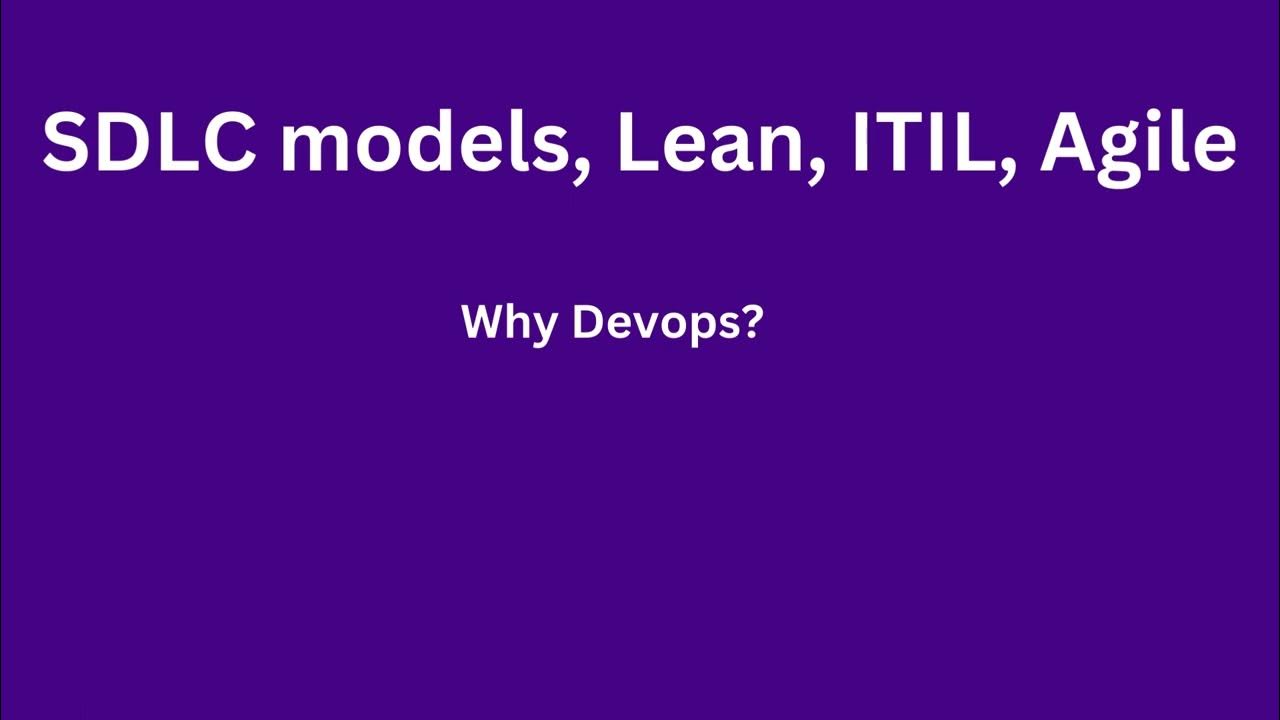27. OCR A Level (H046-H446) SLR6 - 1.2 Development methodologies part 1
Summary
TLDRThis video explores various software development methodologies within the software development life cycle (SDLC). It outlines five key methodologies: Waterfall, Rapid Application Development (RAD), Spiral, Agile, and Extreme Programming. The SDLC phases include feasibility, requirements analysis, design, implementation, testing, deployment, evaluation, and maintenance. The Waterfall model is linear, while RAD focuses on prototyping. The Spiral model emphasizes risk management, and Agile methodologies advocate for iterative development through sprint cycles. Extreme Programming enhances code quality through collaborative practices. Ultimately, viewers learn that there's no single correct SDLC model, but rather a selection of phases tailored to specific projects.
Takeaways
- 😀 The Software Development Life Cycle (SDLC) consists of distinct phases: feasibility, requirements, design, implementation, testing, deployment, evaluation, and maintenance.
- 🚀 Feasibility assesses whether the problem can be solved with current technology, time constraints, and costs before proceeding with the project.
- 📋 Requirements gathering focuses on defining what the finished system needs to do to meet user needs and expectations.
- 🔄 The Waterfall Model features linear progression through phases, with clear start and endpoints but allows limited movement back to previous stages.
- 🔍 Rapid Application Development (RAD) emphasizes creating prototypes that are iteratively refined based on user feedback throughout the development process.
- 🌀 The Spiral Model is risk-driven, allowing teams to adapt methodologies based on unique project risks, focusing on iterative development and risk analysis.
- ⚡ Agile methodologies involve iterative development in short cycles called sprints, accommodating changing requirements and promoting teamwork.
- 🤝 Extreme Programming (XP) is a framework focusing on high-quality code through practices like collective code ownership and paired programming.
- 📈 The maintenance phase is crucial for ongoing software performance, including updates, improvements, and patching issues post-deployment.
- ❓ There is no single correct SDLC model; the choice of phases and methodology should align with the specific needs of the project.
Q & A
What is the Software Development Life Cycle (SDLC)?
-The SDLC is a series of distinct phases that guide the development of a software solution. These phases include feasibility, requirements gathering, analysis and design, implementation, testing, deployment, evaluation, and maintenance.
What are the key phases of the SDLC?
-The key phases of the SDLC are feasibility, requirements, analysis and design, implementation, testing, deployment, evaluation, and maintenance.
What is the Waterfall model in software development?
-The Waterfall model is one of the oldest methodologies, characterized by a linear progression through well-defined phases with identifiable deliverables. It resembles a cascading effect where each phase must be completed before the next begins.
How does Rapid Application Development (RAD) differ from the Waterfall model?
-RAD focuses on creating successive prototypes of the software, allowing for user feedback at each stage. This iterative approach contrasts with the Waterfall model's linear progression.
What is the purpose of the Spiral model?
-The Spiral model emphasizes risk assessment and allows development teams to select elements from different methodologies based on the unique risks associated with a project. It consists of four quadrants: determining objectives, identifying and resolving risks, developing and testing, and planning for the next iteration.
What are Agile methodologies?
-Agile methodologies refer to a group of iterative development practices that focus on accommodating changing requirements during the development process. They utilize short, time-boxed periods called sprints to achieve specific goals.
What is Extreme Programming (XP)?
-Extreme Programming is more of a framework than a strict methodology. It aims to produce high-quality code by promoting core practices like collective code ownership and continuous integration, with a focus on regular, small iterative releases.
What role does user feedback play in the RAD methodology?
-User feedback is crucial in RAD, as each prototype is presented to users for evaluation. This feedback informs further development and can lead to new requirements, initiating another iteration in the process.
What is meant by 'sprint cycles' in Agile methodologies?
-Sprint cycles are short, time-boxed periods during which a development team focuses on completing a specific set of work. Sprints typically last from one to four weeks and are designed to deliver tangible outcomes.
How does the Spiral model help manage project risks?
-The Spiral model helps manage project risks by incorporating risk assessment into each iteration. Teams analyze risks, develop solutions, and refine the project based on these insights, allowing for a more adaptable development process.
Outlines

Esta sección está disponible solo para usuarios con suscripción. Por favor, mejora tu plan para acceder a esta parte.
Mejorar ahoraMindmap

Esta sección está disponible solo para usuarios con suscripción. Por favor, mejora tu plan para acceder a esta parte.
Mejorar ahoraKeywords

Esta sección está disponible solo para usuarios con suscripción. Por favor, mejora tu plan para acceder a esta parte.
Mejorar ahoraHighlights

Esta sección está disponible solo para usuarios con suscripción. Por favor, mejora tu plan para acceder a esta parte.
Mejorar ahoraTranscripts

Esta sección está disponible solo para usuarios con suscripción. Por favor, mejora tu plan para acceder a esta parte.
Mejorar ahoraVer Más Videos Relacionados

Sub Topic 1

DevOps Tutorial: SDLC models, Lean, ITIL, Agile & Why Devops?

Software Testing Tutorial #6 - Software Development Life Cycle (SDLC)

Belajar Sistem Informasi | 2. Membuat Sistem Informasi

05 - System Analysis and Design | What is SDLC | Phases of SDLC | Importance of SDLC

Macam-macam siklus hidup dalam pengembangan proyek | kelompok 8 | X.B
5.0 / 5 (0 votes)
